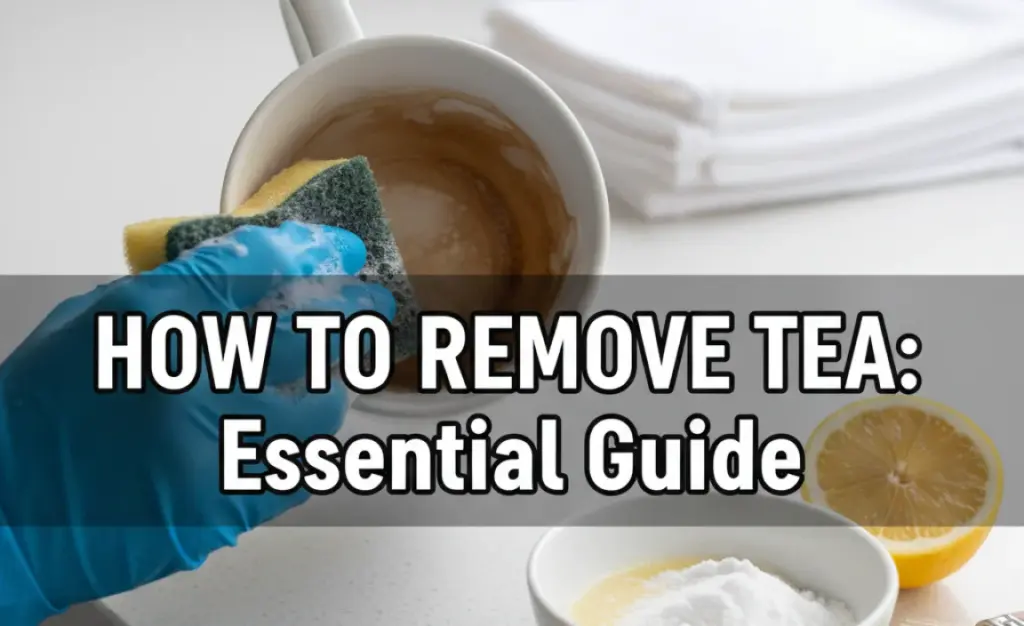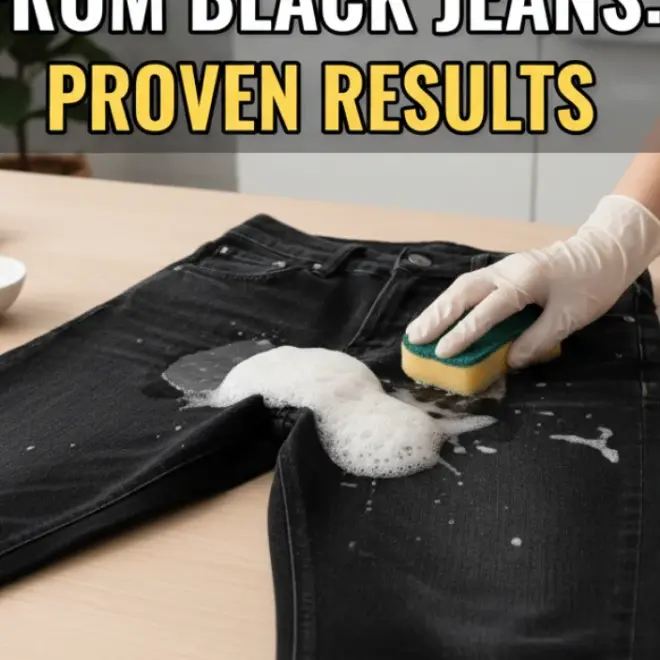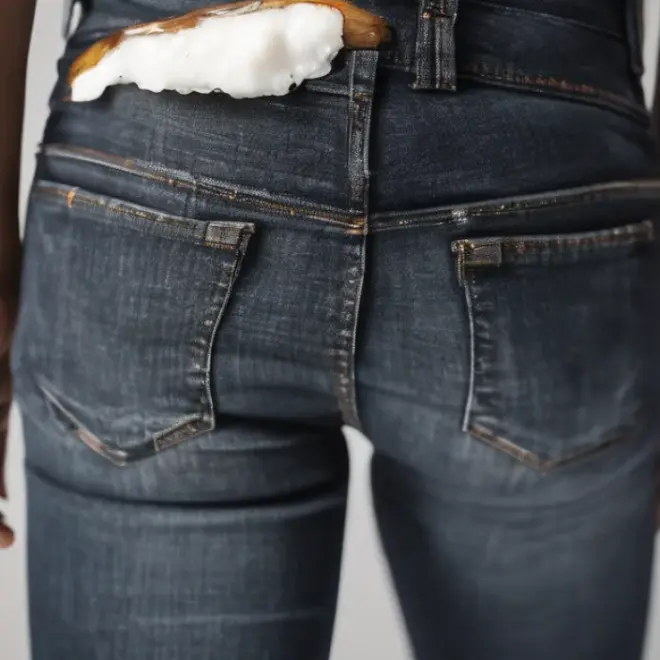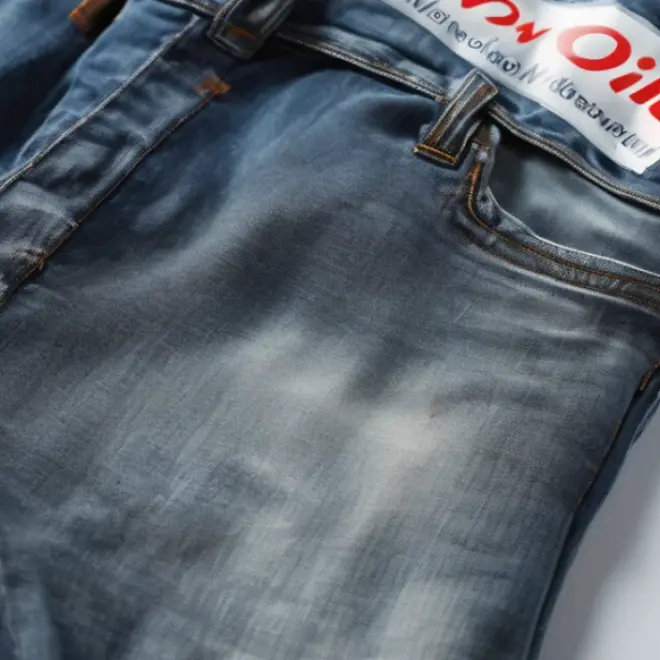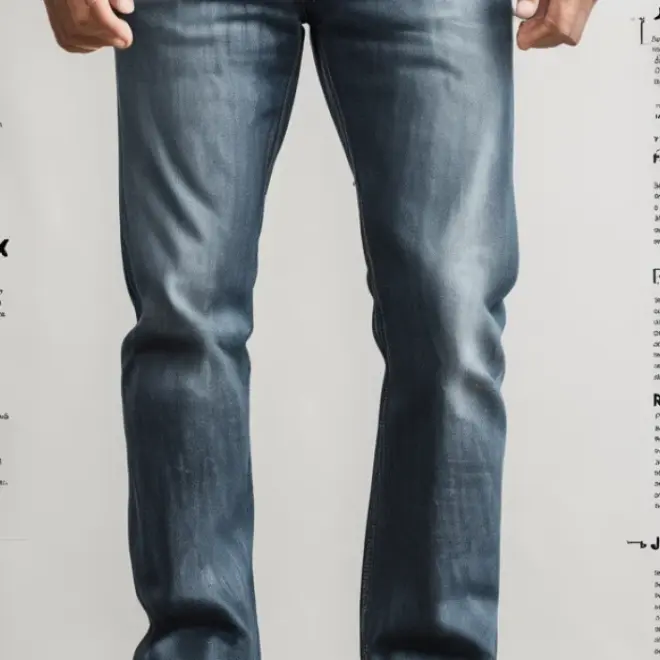Quick Summary: Easily remove tea stains from clothing with common household items. Act fast for best results, using gentle blotting and appropriate cleaners tailored to the fabric type to restore your garments quickly and effectively.
Tea stains are a common nuisance, especially when they land on your favorite lighter-colored items like light wash jeans. The tannins in tea can quickly set into fabric, leaving an unsightly mark that can feel impossible to get rid of. But don’t worry! With the right approach and a few simple ingredients, you can banish those tea stains and keep your clothes looking their best. This guide will walk you through effective, beginner-friendly methods to tackle tea stains, ensuring you can handle them confidently.
Understanding Tea Stains

Tea, whether it’s a morning brew, an iced tea refreshment, or even some herbal varieties, contains tannins. These are natural compounds found in plants, and in tea, they are responsible for its color and flavor. When tannins come into contact with fabric fibers, they can bind to them, creating a stain. The longer a tea stain sits on fabric, the more deeply it can penetrate and set, making removal more challenging.
The color of the tea and the type of fabric also play a role. Darker teas like black tea will leave a more visible stain than lighter teas like green tea or white tea. Porous fabrics, especially natural fibers like cotton and linen, are more susceptible to absorbing the stain than synthetic materials. This is particularly true for absorbent fabrics like those found in light wash jeans.
The Golden Rule: Act Fast!
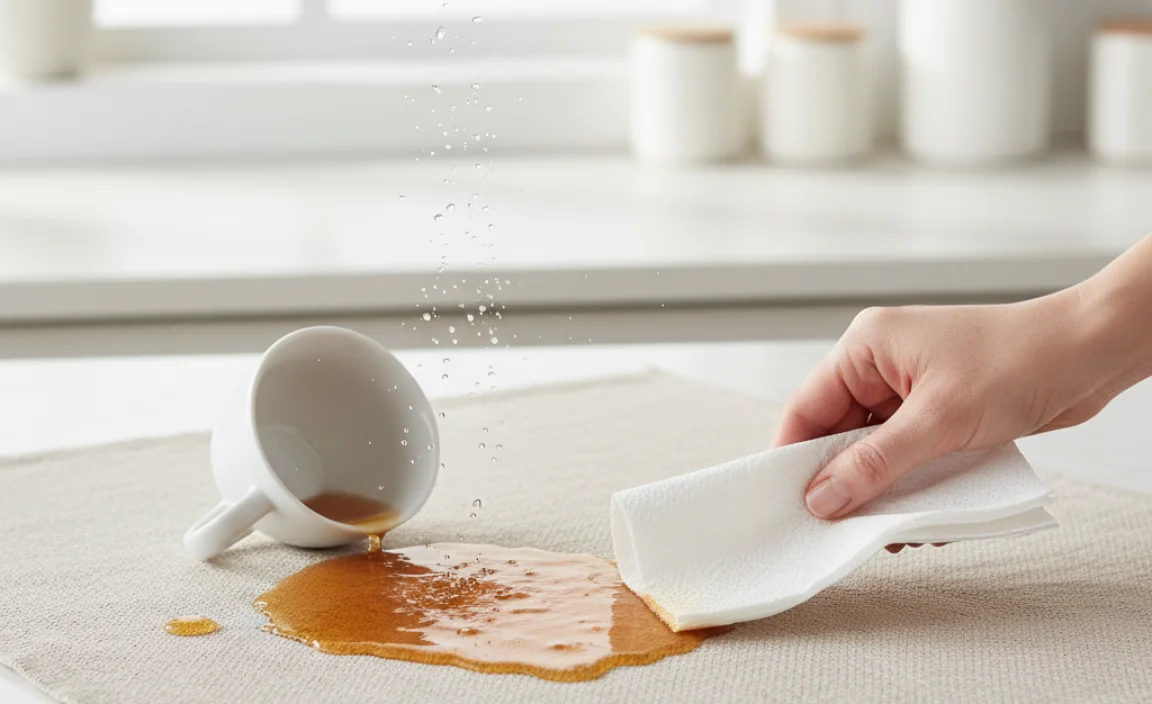
When it comes to removing any stain, time is your greatest ally. The sooner you can address a tea stain, the higher your chances of complete removal. Fresh stains are far easier to lift than dried-in ones.
Here’s why immediate action is crucial:
- Prevents Setting: Liquid stains, especially those with color compounds like tea, will continue to soak deeper into the fabric fibers if left undisturbed.
- Reduces Adhesion: Tannins start to bond with fibers quickly. Prompt treatment disrupts this process.
- Simplifies Removal: Fresh stains often require less aggressive cleaning methods, which are gentler on your fabrics.
So, the moment you notice a tea spill, reach for a clean cloth or paper towel and begin blotting.
Essential Tools & Supplies

Before you start, gather these common household items that will likely be your go-to for most tea stain emergencies. Having them on hand means you can tackle a spill immediately.
- Clean white cloths or paper towels
- Cold water
- Mild liquid laundry detergent
- Baking soda
- White vinegar
- Hydrogen peroxide (3%)
- Lemon juice
- Liquid dish soap (clear, not colored)
- An old toothbrush or soft-bristled brush
Step-by-Step Guide to Removing Tea Stains
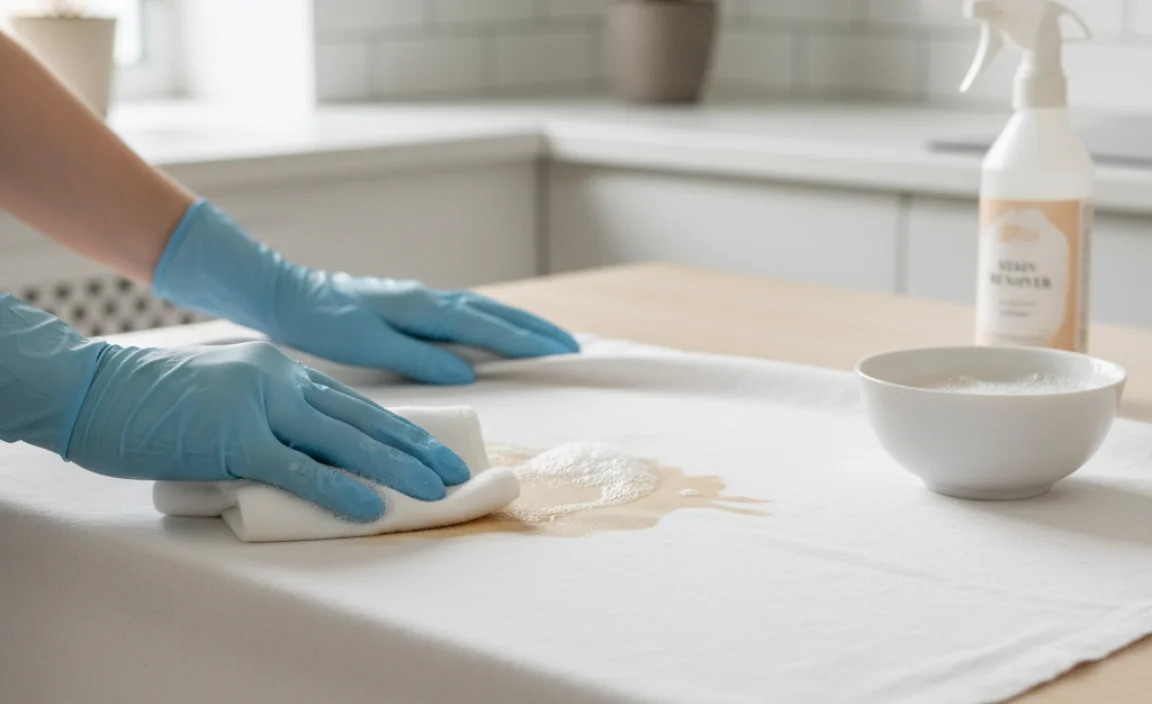
This section breaks down the process into simple, actionable steps. Remember to always test any cleaning solution on an inconspicuous area of the garment first.
Step 1: Blot Immediately
The very first thing to do is blot the fresh stain gently with a clean, dry cloth or paper towel. Start from the outside of the stain and work your way inward. This helps to absorb as much of the liquid tea as possible without spreading the stain further.
Important: Do not rub the stain. Rubbing can push the tea deeper into the fabric and damage the fibers.
Step 2: Rinse with Cold Water
After blotting, turn the garment inside out and hold the stained area under a stream of cold running water. Flushing the stain from the back helps to force the tea out of the fabric rather than pushing it further in. Continue rinsing from the back for a few minutes.
Step 3: Apply a Pre-Treatment Solution
If the stain persists after rinsing, it’s time to apply a cleaning agent. For light wash jeans and most washable fabrics, start with a gentle approach.
Option A: Mild Detergent or Dish Soap
Mix a small amount of mild liquid laundry detergent or a clear liquid dish soap with cold water. Apply this solution directly to the stain. Gently work it into the fabric with your fingers or a soft brush. Let it sit for 5-10 minutes.
Option B: Baking Soda Paste
Create a paste by mixing baking soda with a little water. Apply this paste to the stain, covering it completely. Let it sit for about 15-30 minutes. Baking soda is a gentle abrasive and also helps to lift stains.
Option C: White Vinegar Solution
Mix equal parts white vinegar and cold water. Apply this solution to the stain. Vinegar is acidic and can help break down the tannins. Let it soak for about 10-15 minutes.
Tip: For light wash jeans, be cautious with colored soaps or detergents, as they could potentially add their own color to the fabric.
Step 4: Launder as Usual (with a Caveat)
After pre-treating, wash the garment in the washing machine using cold water and your regular detergent. Check the garment’s care label to ensure you are using the appropriate wash cycle and temperature. For light wash jeans, a cold wash cycle is generally recommended.
Step 5: Inspect Before Drying
This is a critical step. BEFORE you put the garment in the dryer, inspect the stained area carefully. If any trace of the stain remains, DO NOT put it in the dryer. The heat from the dryer will permanently set the stain, making it nearly impossible to remove.
Step 6: Repeat or Escalate if Necessary
If the stain is still visible, repeat the pre-treatment and washing steps. You may need to try a different pre-treatment option from Step 3, or an escalated treatment if the stain is stubborn.
Stubborn Tea Stain Treatments for Light Wash Jeans
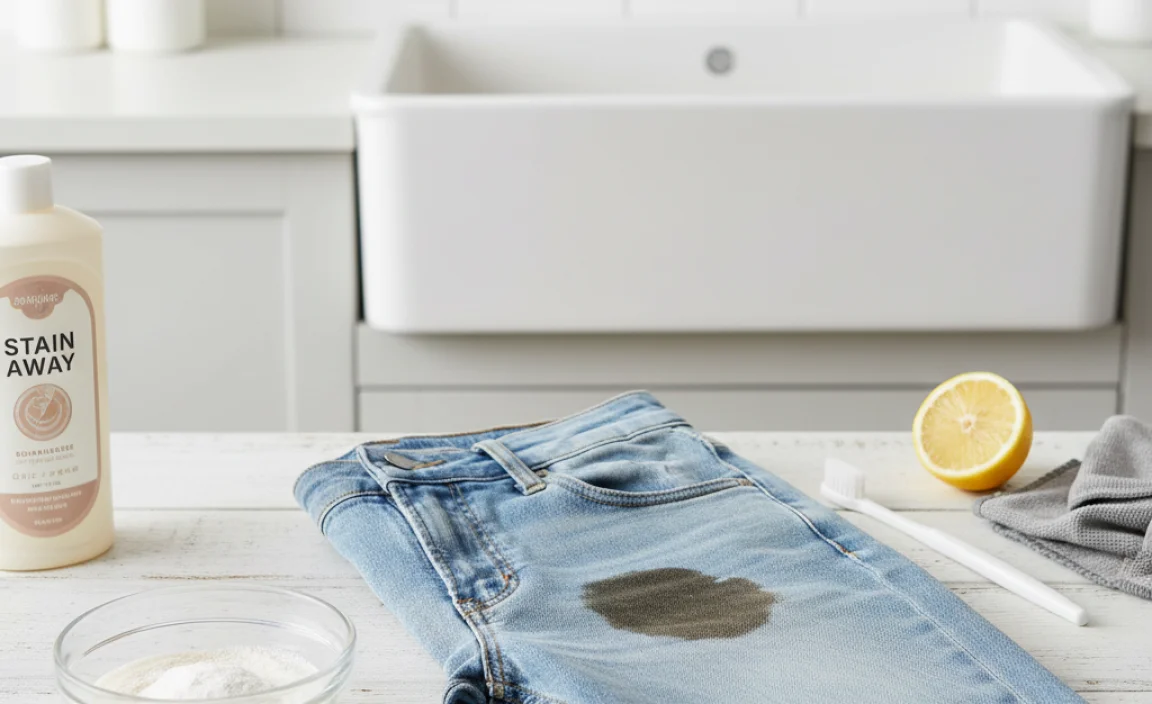
Light wash jeans can be particularly tricky because any residual discoloration is very noticeable. If the initial steps haven’t fully removed the stain, here are more targeted methods. Always test these in an inconspicuous area first, such as the inside of a hem or waistband.
Method 1: Hydrogen Peroxide (for White or Light-Colored Fabrics Only)
Hydrogen peroxide is a mild bleaching agent excellent for tackling tough stains on white or very light-colored fabrics like light wash jeans. Never use it on colors as it can cause fading.
- Mix one part of 3% hydrogen peroxide with one part of cold water.
- Apply the solution directly to the stained area using a clean cloth or cotton ball.
- Let it sit for 10-15 minutes. You may see the stain start to lift.
- Rinse the area thoroughly with cold water.
- Launder the jeans as usual according to their care label. Inspect before drying and repeat if necessary.
Caution: While relatively safe, avoid leaving hydrogen peroxide on the fabric for extended periods without monitoring, as it can weaken fibers over time.
Method 2: Lemon Juice and Sunlight
This natural method uses the bleaching power of the sun and the acidity of lemon juice.
- Squeeze fresh lemon juice directly onto the tea stain.
- Lay the jeans flat in direct sunlight. The combination of lemon juice and sunlight acts as a natural bleach.
- Let them sit in the sun for a few hours, or until the stain begins to fade noticeably. Keep an eye on it to prevent over-bleaching or damage to the fabric.
- Rinse the jeans thoroughly with cold water.
- Launder as usual.
Consideration: This method is best for removing any lingering faint yellowing after the main stain is gone and is most effective on very light or white fabrics. It may lighten the overall color of your jeans, so use it judiciously.
Method 3: Specialized Stain Removers
If you prefer commercial products, there are many effective stain removers designed for organic stains. Look for an oxygen-based cleaner (often labeled as OxiClean or similar) or an enzyme-based stain remover. Follow the product instructions carefully:
- Typically, you’ll apply the product directly to the stain or soak the garment in a solution.
- Allow the recommended dwell time.
- Launder the garment as usual.
For extensive information on stain removal, consult resources from textile experts, such as those found on university extension sites. For example, University of Missouri Extension offers comprehensive guides on laundry and stain removal.
What Not to Do
Certain actions can make tea stains worse or damage your clothing. It’s important to be aware of these common mistakes.
- Don’t use hot water initially: Hot water can quickly set protein-based stains (though tea is tannin-based, heat generally causes stains to set faster on many fabrics). Always start with cold water.
- Don’t rub vigorously: As mentioned, this spreads the stain and can fray fabric fibers.
- Don’t put stained items in the dryer: Heat is the enemy of a fresh stain. Always ensure the stain is gone before drying.
- Don’t use colored soaps or detergents on light fabrics: These can transfer their own dye, creating a new problem.
- Don’t mix cleaning products randomly: Some combinations can be ineffective or even create harmful fumes. Stick to tested methods.
Understanding Fabric Types and Stain Removal
The effectiveness and safety of different stain removal methods can vary significantly depending on the fabric type. Light wash jeans are typically made of cotton or a cotton blend, which are generally durable but can be susceptible to staining. Here’s a quick look:
| Fabric Type | Tea Stain Susceptibility | Recommended Treatments (Initial to Advanced) | Cautionary Notes |
|---|---|---|---|
| Cotton / Cotton Blends (e.g., Jeans) | High | Cold water rinse, detergent, baking soda paste, vinegar, hydrogen peroxide (light colors), lemon juice & sun (light colors) | Can be prone to water spots; test stronger treatments; avoid chlorine bleach on colored dyes. |
| Linen | High | Similar to cotton, but can be more delicate. Gentle blotting and mild detergents are key. | Can wrinkle easily; avoid harsh scrubbing. |
| Silk | Medium | Mild detergent specifically for delicates, lukewarm water. Professional cleaning recommended for stubborn stains. | Very delicate; avoid soaking, hot water, and strong chemicals like hydrogen peroxide or vinegar. |
| Polyester / Synthetics | Low to Medium | Often resistant but can hold stains. Detergent, dish soap. Acetone may work for some synthetic dye stains but test first. | Some synthetics can melt under high heat; check care labels carefully. |
For your light wash jeans, which are likely cotton or a blend, the methods outlined for cotton and cotton blends are your primary strategy. The durability of denim means it can usually withstand gentle scrubbing and mild stain treatments.
Special Considerations for Different Tea Types
While the general approach to tea stains is similar, very dark or strongly pigmented teas might require a bit more persistence.
- Black Tea: The most common culprit, with strong tannins. Requires prompt action and potentially a repeat of treatment.
- Green Tea/White Tea: Lighter in color, often leaving less visible stains, but still require the same immediate care.
- Herbal Teas: Some herbal teas, like hibiscus or berry blends, can have intense colors due to the fruits or flowers used and may stain similarly to black tea.
- Iced Tea: Often contains sugar, which can make it sticky. The sugar itself isn’t the staining agent but can help bind the tea color to the fabric. Rinse thoroughly to remove stickiness.
Regardless of the tea type, the principle of acting fast and using cold water remains the most important step.
FAQ: Your Tea Stain Questions Answered
Q1: How quickly do I need to treat a tea stain?
A1: As fast as possible! Fresh tea stains are much easier to remove than ones that have sat for hours or dried. Aim to blot and rinse within minutes if you can.
Q2: Can I use bleach on tea stains on my light wash jeans?
A2: It’s generally not recommended to use chlorine bleach on colored denim, even light wash, as it can cause uneven fading or damage the dye. Oxygen-based bleaches or laundry boosters are a safer alternative.
Q3: What if the stain is old and dried?
A3: Old, dried tea stains are tougher. You might need to soak the garment in cold water with a heavy-duty laundry detergent or an oxygen-based stain remover overnight. Then, proceed with spot treatments and re-wash.
Q4: Will these methods damage the color of my light wash jeans?
A4: The methods described (cold water, mild detergent, baking soda, vinegar) are generally safe for most fabrics, including light wash denim. Hydrogen peroxide and lemon juice should only be used on light colors and tested first, as they can lighten fabric.
Q5: Can I use dish soap on my jeans?
A5: Yes, clear liquid dish soap is often very effective at breaking down oils and organic stains. It’s a common and safe pre-treatment for many fabrics, including denim.
Q6: How do I prevent future tea stains?
A6: Practicing careful drinking habits is key! Use coasters, avoid overfilling cups, and be extra cautious when wearing light-colored clothing or fabrics. If you’re particularly prone to spills, consider wearing darker clothing or using spill-proof travel mugs.
Conclusion
Dealing with tea stains on your cherished light wash jeans or other garments doesn’t have to be a source of stress. By understanding the nature of tea stains and following a systematic, prompt approach, you can effectively remove them. Remember the core principles: act fast, use cold water, blot don’t rub, pre-treat wisely, and always check before you dry. With the simple techniques and common household items shared in this guide, you’re now well-equipped to tackle tea stains and keep your wardrobe looking fresh and stain-free. Your favorite light wash jeans are salvageable, and a few minutes of attention can make all the difference.


